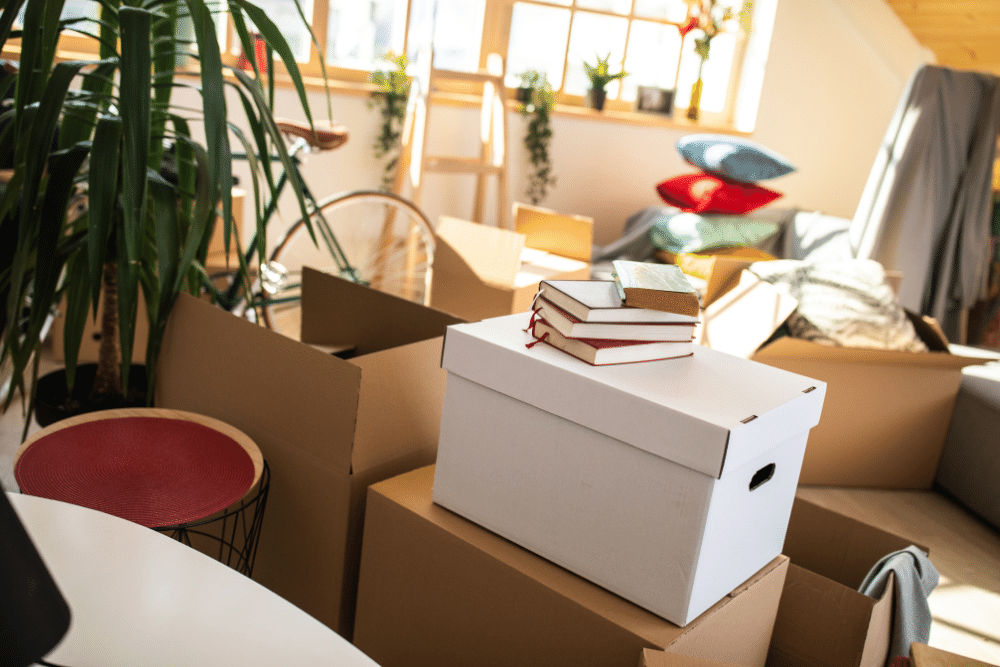How to Make Moving House Less Stressful
Moving house is an exciting life milestone. However, uprooting your life from one place and settling down in another can also be daunting. From choosing your move day to sorting a removals company, there’s a lot of admin involved. To minimise stress on the big day, we’ve put together a short guide to moving house.
When you move, there’s a whole stack of things you’ll need to sort out. If you’re not organised in your approach to moving, things can go wrong; belongings get left behind or go missing, and the process can take much longer than expected.
Prepare in advance
Preparation is the key to avoiding stress when you move. Deal with the process methodically; this way, it’s more likely that everything will go according to plan.
Keep a list of stuff you need to get done
Add to it and cross things off as you go along, so that you don’t forget any of the small details.
Pick your moving days in advance
The move might take longer than you think, so it’s a good idea to block out more than one day. It’s wise to avoid Mondays and Fridays, as there’s often a higher volume of traffic and you or your removal van could be delayed.
Pack up methodically
Packing up can seem like a mammoth task, but start early and take it room by room so that you’re less likely to miss small details or get caught up in the stress. The night before, you should only have your essentials left out. You might also want to use the move as an excuse to declutter; get rid of anything that you don’t want or need in your new home. The alternative, if you feel you’ve got enough on your plate, is to hire a professional to do your packing for you.

Decide what you want to put in storage
If you have items of furniture in your current home that may not suit or fit into your new house, you can put them in storage. Just make sure that you keep these boxes separate from the rest, so that the removal team takes them to the right place.
Prepare a bag of essentials for emergencies
It’s important to keep a few things aside – maybe a small suitcase worth – in case you need them during the move, or things don’t go entirely to plan. These should include any valuables or crucial documents, a few sets of clothes, toiletries (including loo roll!), medication and a phone charger. Keep the bag in a specific place to stop it accidentally being loaded into the removal van with everything else.
Get the kids and pets out of the way
Move day is stressful enough without children and animals getting under your feet as you try to clear the house. If you have little ones or furry friends, consider asking family or friends to look after them for a day or two or plan how you’ll keep them occupied and away from the action.
Make sure your phone is charged. Should anything not go to plan, you’ll need to be able to contact your letting agent, removal company or family.
Hire a removal company
Once you’ve chosen your move day, it’s time to find a removal company. Since you’ll be entrusting the removal team with your life’s possessions, you’ll want to choose a company you can trust; this isn’t an area to scrimp on. The best way to find a good firm is word of mouth – ask around and you’ll most likely find a reliable recommendation.
On the day, it’s worth making sure you have cash on hand to tip your movers.

Arrange switching services
When you move house, you’ll have to let your service providers know at least 48 hours in advance. They’ll also need your new address, so they can send you the final bill. You should take a meter reading on your final day in the property to avoid being overcharged; send it to your supplier but also keep a note yourself.
When you arrive at your new home, you’ll automatically be contracted with the energy provider of the previous owners. You should give this company the existing meter readings.
If you were happier with your old provider’s rates, you can switch back – you just need to settle any bills you’ve racked up since moving and get in touch with the old provider, sending your current meter reading.
Moving house needn’t be a source of stress. Following this simple guide should help the process run like clockwork.